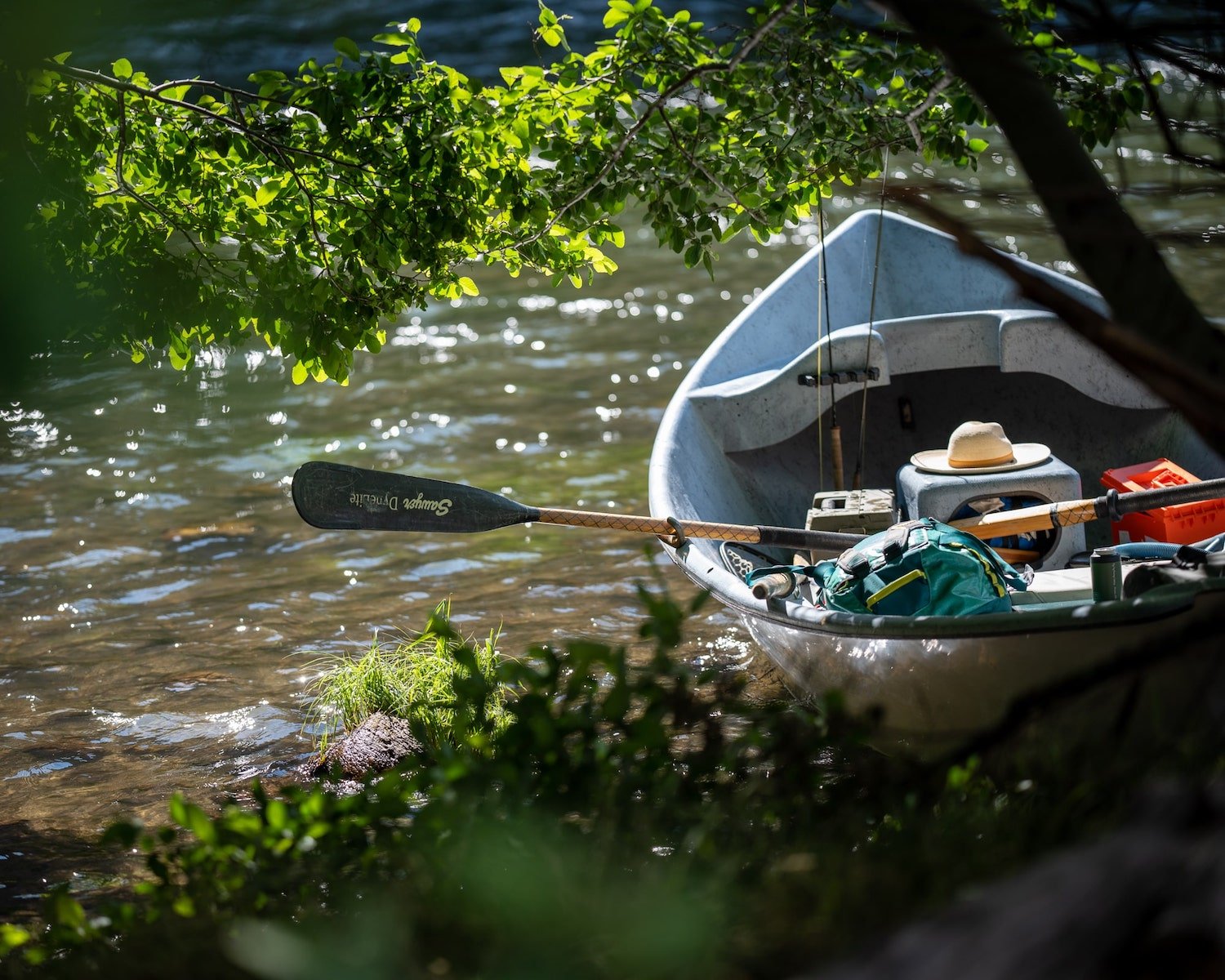Lower Deschutes: Wild and Scenic?
Trout on the lower Deschutes. Photo by Michael Peterson.
Wild Oregon
Oregonians have a political tradition of leading the nation, often in their own quirky way, on environmental issues. From Republican Governor Tom McCall, who insisted on a working relationship between the terms “conservative” and “conservation,” to the grand compromise of the Clinton Forest Plan, Oregon’s persistent yet imperfect pursuit of taking good care of its land, air and water has been a wild ride.
The lower Deschutes River has been affected by this political roller coaster, more lately on the imperfect side of the state’s pursuit of environmental virtue. The DRA has written extensively about the hundreds of specific violations of Clean Water Act law that have taken place since operation of the Selective Water Withdrawal Tower began in late 2009. The ongoing water quality problems also run afoul of another federal law that protects the lower Deschutes under the federal Wild and Scenic River (WSR) Act.
Subverting Wild and Scenic
Directives to management agencies to protect the qualities that earned a waterway designation under the WSR Act can be found throughout the language of the law. In particular, section 7(a) of the Act prohibits management actions that would “unreasonably diminish” the values that designated a river as Wild and Scenic in the first place. One of the values that earned the lower Deschutes’ designation as worthy of WSR protection back in 1988 was its unique populations of trout, salmon, and steelhead.
Yet under the current management regime, native trout display black-spot disease. Worse, spring Chinook are gravely threatened by the explosion of the presence of Ceratonova shasta, a parasite that can eventually kill infected salmon. Subjecting spring Chinook to lethal conditions would seem to fall under the category of “unreasonably diminished.” Worse, voters in Oregon have made it clear they don’t want the river to be this way.
River Democracy
An early milestone on Oregon’s journey to protect the Deschutes was its inclusion back in ‘88 as worthy of designation under the WSR Act. True to the Oregon Way, an initiative petition, Measure 7, was put on the statewide ballot in November of that year. The Measure was essentially a statewide referendum on the inclusion of the Deschutes and other Oregon rivers under the expansion of the WSR Act. The measure passed, 56 to 43 percent. By a wide margin, citizens of Oregon indicated their preference for a lower Deschutes River federally protected from pollution and industrial-scale development. Current management of the river not only badly bends the stated intent of federal laws, it thwarts the stated will of the People.
Portland General Electric claims on its website that Tower operations can be changed easily, and won’t affect levels of power generation or revenue. If true, PGE, as well as the state of Oregon should be embarrassed that an environmental problem with such a simple fix has been allowed to fester for nearly a decade and a half.
Save What You Love
For the uninformed, who insist that such problems are happening on western trout streams everywhere, and that the Deschutes can’t be fixed with a “silver bullet” solution: good science offers the strong possibility that you’re wrong.
No other river in the state began to immediately experience water quality violations like the lower Deschutes did in late 2009, as soon as the SWW became operational. No other tributary in the Columbia Basin in spring of 2010 became warmer than the mainstem Columbia, after millennia of springtimes running cooler. And few, if any, other rivers in the Pacific Northwest over the past decade have been monitored as closely by scientists, guides and anglers, who’ve tracked the proliferation of algae, the decrease in diversity and abundance of aquatic insects, and the proliferation of parasite-born diseases that thrive in warmer water.
Conversely, no other river has come so rapidly back into compliance with state water quality standards on the too-rare occasions that cold, clean water from the depths of its feeder reservoir supplanted warm, polluted water from its surface.
Water quality standards exist to protect aquatic life. When those standards are violated, aquatic life is threatened. Oregonians have long spoken out against allowing such threats to multiply, including those present on the Deschutes.
Persistence can eventually overcome imperfection. The DRA is working to pressure PGE and the Oregon Department of Environmental Quality to uphold Oregonian’s long-held opinion that the Deschutes should run clear, clean and cold. You can help. Write a letter to the Governor’s office this week. It’s not too late to heal the river we all love.
More From The Blog
Subscribe the the DRA Newsletter
The Deschutes River Alliance is your focused voice to protect the lower Deschutes River, its cold water flows and the fish and wildlife that are sustained by them. We send regular emails with important data and news about the lower Deschutes River. We will not sell or loan your contact information to others.
How to Support the DRA
Everyone wants clean, healthy water in the Deschutes River. Oregonians cherish our clean and healthy waterways to provide drinking water, wildlife habitat and recreational activities. The lower Deschutes River is a federally designated Wild & Scenic River, and a national treasure. It must be protected for the environmental and economic health of Central Oregon. We believe by working together we can return the lower Deschutes River to full health.






















